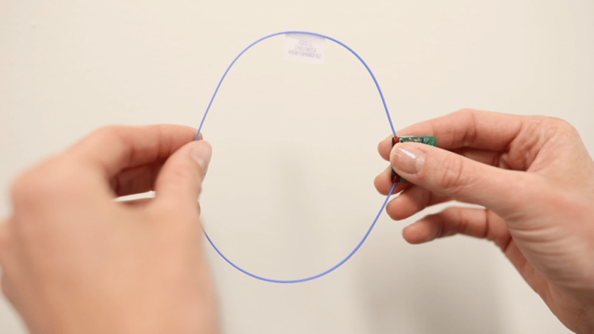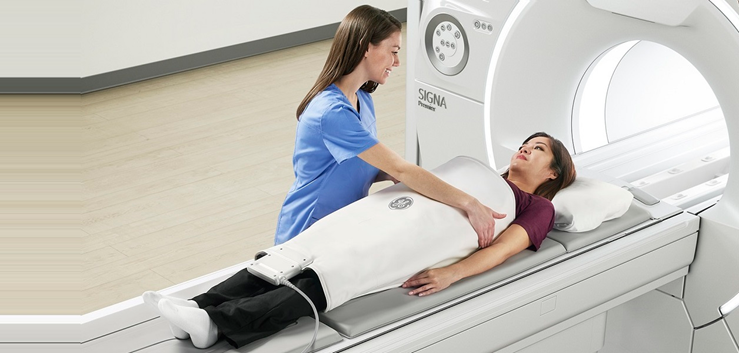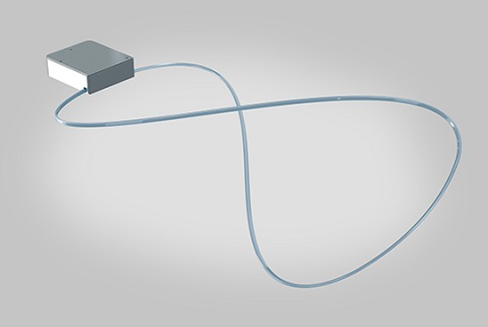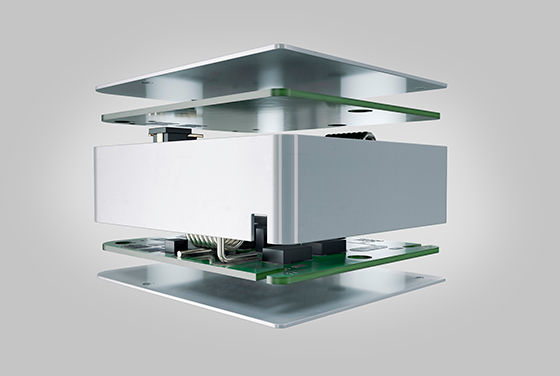
GE Healthcare is reporting favorable reviews for its new flexible magnetic resonance imaging coils which can dramatically change the way many diagnostic imaging procedures are conducted on patients.
For many patients, a magnetic resonance imaging (MRI) scan can trigger feelings of discomfort, anxiety and sometimes fear. Now a new kind of coil technology is changing the game on this experience, while helping radiologists get clear images for confident diagnoses.
During a scan, technologists use a radio frequency coil to capture and listen to the electro-magnetic waves coming from the part of the body radiologists are imaging. The coil acts like an antenna picking up signals from a patient’s body and converting them to images. In MRI equipment, RF coils are the receivers, and sometimes also the transmitters, of radio frequency signals, typically consisting of two electromagnetic coils, the transmitter and receiver, which generate the field and receive the resulting signal.

But they’re usually bulky, heavy and uncomfortable for patients and medical technologists alike. GE’s new AIR Technology Coils are designed to conform to the human body like a blanket would. It uses innovative conductor material designed for ultra-flexibility. Each coil is lightweight and flexible to closely wrap around patients yet can yield incredibly detailed images.
Its 48-channel head coil is designed to fit 99.9 percent of patients, from preemies to professional linebacker. Its ultra-lightweight and flexible design makes it easier for the technologist to position the coil on the patient. The conductor material was designed to allow each coil element to be closer to the patient’s anatomy for improved signal reception, depth of penetration and image quality.

Two separate but simultaneous research projects were required to develop the innovative technologies at the heart of AIR Technology, says GE. Together, they consolidate the functionality of the coil for efficiency. This simplified design is the basis for a revolutionary coil that is lighter, offers more flexibility and provides greater coverage.
Developing a light, flexible loop is one thing, but finding a way to control loop-to-loop interactions was no small feat of engineering. Because of the low profile and performance of the E-mode electronics module, GE was able to place it right at the base of each loop where it can better control the surrounding magnetic and electric fields. This enabled breaking free from critical overlap restrictions and arranging elements closer together.

A core element to the new form-fitting coil design was creating a conductor loop with great flexibility. Sometimes the right material can be the linchpin to a breakthrough innovation, says the company. For AIR Technology, it was the conductor material for the loop. Lightweight and bendable, this series of linked resonators replaces what used to be rigid circuit boards and lumped components.

Another key design element was getting newer, advanced electronics into a very small unit. Within this miniaturized module are some of the most advanced coil electronics ever developed, says GE. “Our proprietary E-mode electronics reduce current noise, boost linearity and improve tolerance to varying coil loading conditions. It makes the most out of every centimeter to reduce component volume by more than 60 percent.”
“We were impressed right from the get-go. It’s very light, comfortable and flexible. It’s a big change from the larger, rigid anterior array coils that we used to use. For patients who have had previous scans with the rigid, large coil, they have commented that the AIR Coil is much more comfortable,” says Tom Schrack, manager of MR education and technical development at Fairfax Radiological Consultants in Fairfax, Virginia. His was among several favorable user reviews that GE reported in May.
AIR Coils also reduce a common worry with flexible coils called decoupling, when a flexible coil overlaps over itself, loses signal and interrupts the scan. This is especially common when imaging legs, hips and shoulders, where coils are wrapped around the body part. “The beauty about being able to wrap your anatomy is that where the coils overlap, they don’t decouple. That’s a pretty substantial technological advance,” says Schrack. “You can literally wrap up your anatomy like a hot dog bun and not have to worry about it. That makes our life a lot easier and makes the scans go a lot quicker.”
Now GE’s system integrates the coil technology into two automated techniques, AIR Touch for coil selection and AIRx, an artificial intelligence-based tool that prescribes the image “slices” to take.
“The integration of AIR coils and AIRx means that the operator never has to worry about picking the right coil element combination,” says Schrack. “You don’t to take any time selecting or deselecting coil elements. Based on the operator’s scan prescription, the system will automatically turn on the exact configuration of coil elements for the best coverage and SNR.” Schrack says this advanced technology is the future of MRI imaging. “It really is the next big thing. AIR Coils will change the industry.”
For more info, see www.gehealthcare.com.



